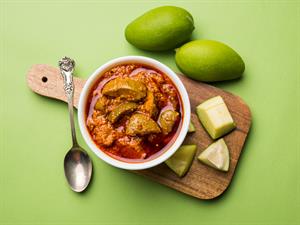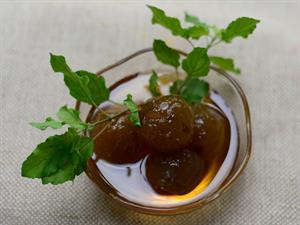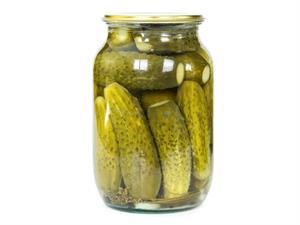PDF chapter test TRY NOW
Have you seen your grandmothers or mothers preparing pickles using seasonal fruits like raw mangoes? Enquire the method they employ for the preservation of them.
Yes! Pickles are one of the preservation techniques that were used in order to preserve the seasonal raw mango. Food is preserved by adding natural and synthetic preservatives.
Natural preservatives
Naturally available materials like salt, sugar and oil are used as preservatives of food.
Addition of salt:
It is one of the oldest technique used in the preservation of food. Adding salt removes the water or the moisture content in the food through the process of osmosis. The growth of bacteria is thus prevented. There is also a reduction in the activity of the microbial enzymes. Salt is also used as a preservative in pickles, canned foods etc.
Example:
Meat, fish, raw mangoes, gooseberry, lemon are preserved by salting.

Pickling of mango
Addition of sugar:
Sugar or honey is added as a preservative to increase the shelf life of fruits and also fruit products like jams, jellies, squash, etc. The hygroscopic nature of sugar or honey helps to reduce the water content of the food.

Preserving Amla (gooseberry) in honey
This is because the high concentration of sugar or honey binds to the moisture, which makes it unavailable for microorganisms to grow. The addition of sugar also minimizes the oxidation process in fruits. These factors thus contributes to an increased shelf life of the food product.
Addition of oil and spices:
A layer of oil on the top of food prevents the growth of microorganisms like yeasts and moulds. Adding oil in pickles prevents the contact or exposure of air with the food. Thus, microorganisms cannot grow and spoil the food.
Spices like turmeric, pepper, asafetida have bacteriostatic effects and prevents the growth of microorganisms.
Synthetic preservatives
Certain chemicals are added in small quantities to hinder undesirable chemical changes in food by:
- interfering with microorganism cell membrane or their enzyme activity
- acting as antioxidants.
Synthetic food preservatives like sodium benzoate, sodium meta bisulphate, sorbic acid, potassium bisulphate, calcium propionate, acids like vinegar and citric acid are added to food products like jams, jellies, sauces, packed and ready-to-eat (RTE) foods.
The synthetic preservatives delay microbial growth and keep the food safe for a long duration. The addition of acids like organic acids are allowed in the food to preserve them. Acetic acid or vinegar, Citric acid in the form of lime juice can be added as preservatives.
Example:
- Onions and cucumber are bottled with vinegar and salt.

Cucumber bottled with vinegar
- Citric acid is added to jams and jellies to prevent the growth of mould.
